Showing 145–156 of 1182 results
Chinese philosophy is highly unique in its profound sense of moral thinking. The fundamental thesis of Chinese thinking is interdependence and mutual relationships between entities, human and natural. For great thinkers like Confucius and Lao zi a human being is a relatively constituted and situated self. What is important in social living is correlative thinking and resonance, complementary approach to differences, action guiding nature of judgment and the effective appropriation of naturalness and spontaneity in the interrelations between individuals, human beings and nature. The book is a prelude to study the significance of personal excellence and social harmony embedded in Chinese philosophical tradition.
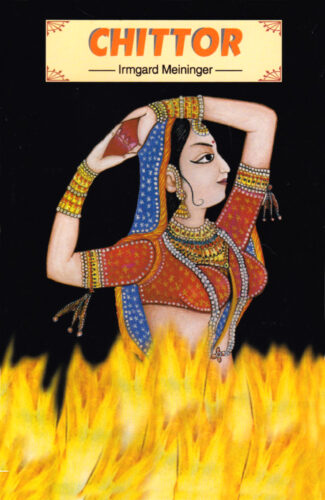
It presents the history and culture of Rajasthans greatest fortified citadel and Mewars ancient capital, Chittorgarh. It narrates the heroic sagas of its warriors and describes its beautiful palaces, temples and lakes.
Every region/community of the world has its sahre of oral creativity, in varying measures though. And, accordingly, has its own legacy of chanted narratives: epical, hostorical, mythical, romantic, or even ritualistic. Which have long survived in the collective memory of its people, having been handed down from generation to generation. Confronted, however, by the cornucopian techno-centrism of todays life, these oral narratives are on their way out everywhere like many other vibrant cultural phenomena. Highlighting why we need to preserve this intangible heritage of mankind, the volume offers a fascinating study of chanted narratives from different regions of India and parts of Southeast Asia. Essentially a multi-author work, it explores the nature of orality and its various attendent aspects, like composition, performance, transmission modes, socio-economic context, and the relationship that exists between its performer and the audience. Also addressing methodological issues concerning the existing definitions and terminologies, the authors argue for a paradigm shift in the academic discourse on orality and oral cultures. Carrying twenty four contributors of leading scholars from France, Germany, India, Indonesia, Italy, Nepal, New Zealand, Sri Lanka and UK, the book not only provides theoretical insights into the complex nature of orality, but sets out a rich repertoire of chanted narratives as well. Folklorists, anthropologists, historians and scholars of Indian cultures will find it a useful acquisition.
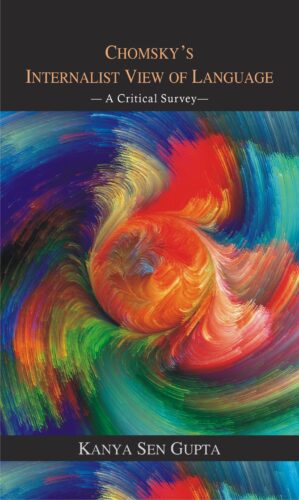
This book analyses Chomsky’s philosophy of language in the context of its difference from Wittgenstein’s account of language, and also other views of language which are in line with Wittgenstein explanation. And it aligns with the philosophy of Wittgenstein and his colleagues.
This volume endeavours to get at Chomsky’s philosophy of language in the context of its difference from Wittgenstein’s account of language, and also other views of language which are in line with Wittgenstein explanation. Since Chomsky’s preference is grammatical or structural approach to language, which is innate, he interprets knowledge of language as knowledge of rule-governing sentence formation. Obviously, Chomsky approves of Private Language with no concern for the theory of communication which is rooted in the use of language. In other words, Chomsky is not interested in successful communication which takes place only in social practices. But, according to what we have discussed in this book, successful communication or speech act is possible by what people normally do according to social convention.
In short, since Chomsky depends upon the structure or innateness of internalist approach to language, he cannot be accounted for social interpretation of language, which is needed for successful communication. As in this book, we are committed to public or socially approved language of Wittgenstein and his colleagues which is essential for communication, we walk away from Chomsky’s structural or mentalistic or innatist interpretation of language.
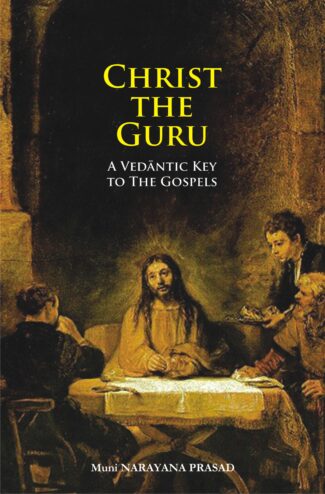
This commentary volume contends that, from the Gospel accounts of Bible, one may perceive, in Jesus’s life and words, the same absolutist vision that underlies the teachings of Advaita Vedanta. Echoeing interreligious harmony, it invites non-Christians to visit the great enlightened guru in Jesus, and the Christians to imbibe the spirit of Advaita Vedanta in Jesus’s teachings.
The ocean of philosophical insight hiding in the words and story of Jesus Christ has influenced and charged millions of people and are still inspiring. The teaching and philosophy discerned across the four Gospels According to Matthew, Mark, Luke and John have stirred the philosophical perspective of Muni Narayana Prasad and it paved the way for him making a Gospel commentary in the light of Indian philosophy, Advaita Vedanta. In his scholarly attempt, the author has brought an apocryphal Gospel of Thomas too into its ambit.
Though the words of wisdom revealed by Jesus across these Gospels differ in language and style from Indian Vedanta, they reveal the same wisdom or supreme happiness that the Vedanta philosophy talks about. In this book, the author has attempted to explain the wisdom found in one cultural frame of reference as found in the other. That is, the teachings of Jesus Christ are elucidated in terms of the characteristics of Advaita Vedanta. Jesus, seen across these Gospels, always maintains his position of an enlightened seer (rishi). Thus the author calls him a sad-guru.
The author contends that from the Gospel accounts one may perceive, in Jesus’s life and words, the same absolutist vision that underlies the teachings of Advaita Vedanta. Echoing interreligious harmony, the author invites the non-Christians to visit the great enlightened guru in Jesus and the Christians to imbibe the spirit of Advaita Vedanta in Jesus’s teachings.
A must-collect, the book should find favour with the spiritual gurus, philosophers, and all progressive-thinking persons across religions.

This work, in simple language, is meant for non-Christians, particularly Hindus, who may be interested in knowing about Christianity, professed by about a third of the world’s population what it teaches, how do Christian doctrines compare with Hindu dictums, what are the various denominations, etc.
Christianity is the worlds largest religion today: about 33.6 per cent of the worlds population has Christianity as their religion. It is also a religion that struck roots early in India as early as middle of the first century ce. The book is an account on Christianity that blends aspects of Christian belief and worship with matters like its significance and the urgent need for interfaith understanding in the globalised and pluralistic societies of today. It is meant for non-Christians, particularly Hindus, who are keen to understand the essential aspects of the religion.
In simple language, the work reveals the essence of the Christian beliefs, its spread over history and its prevalence now, and its importance as a world religion. It examines doctrines of the Church, significance of Jesus Christ, and historical forms of Christianity like Roman Catholicism, Eastern Orthodoxy and Protestantism. It examines the history of Christianity in India. The interesting work refers to a number of religious works on Christianity and writings of men who commented on Christianity and personified its values like love, compassion and sacrifice. It also deals with some controversial features of the religion like its need to proselytise.
Cinema Through Rasa discusses the important works of the world cinema in the light of Rasa Siddhānta of the Indian classical aesthetics. Rasa Siddhānta was first mentioned in Bharata Muni’s Nāṭyaśāstra – the ancient treatise on dramaturgy. This book catalogues the major cinematic works in the light of Abhinavabhāratī – a tenth-century commentary on the Nāṭyaśāstra by the great Kashmiri Śaivite philosopher Abhinavagupta. Further, it outlines the links between puruṣārtha, the cultural value system of life pursuits in Indian tradition, and aesthetics while citing examples from the works of major directors such as Orson Welles, Luis Buñuel, Ingmar Bergman, Akira Kurosawa, Andrei Tarkovsky, Alfred Hitchcock, Carl Dreyer, Charlie Chaplin, Sergei Eisenstein, Robert Bresson and Satyajit Ray.
Using contemporary scholars’ interpretation of non-dualistic Kashmir Śaivism tradition, Cinema Through Rasa aims to serve as a tribute to Abhinavagupta’s genius, a commentary on important ideas such as rasa, nature of emotions, cinema and beauty along with a tryst with the masterpieces of the world cinema. The meaning of this book is summarized by this verse – na hi rasād r̥te kaścid arthaḥ pravartate – the medium of cinema, though modern, should be seen as resting in the power of rasa without which nothing makes any sense.
This book is a translation of the original Hindi book Abhinava Cinema, which was first published in 2016. Abhinava Cinema was lauded as innovative, path-breaking and a must-read for students of literature and cinema studies by scholars and critics.
Cinema Through Rasa discusses the important works of the world cinema in the light of Rasa Siddhānta of the Indian classical aesthetics. Rasa Siddhānta was first mentioned in Bharata Muni’s Nāṭyaśāstra – the ancient treatise on dramaturgy. This book catalogues the major cinematic works in the light of Abhinavabhāratī – a tenth-century commentary on the Nāṭyaśāstra by the great Kashmiri Śaivite philosopher Abhinavagupta. Further, it outlines the links between puruṣārtha, the cultural value system of life pursuits in Indian tradition, and aesthetics while citing examples from the works of major directors such as Orson Welles, Luis Buñuel, Ingmar Bergman, Akira Kurosawa, Andrei Tarkovsky, Alfred Hitchcock, Carl Dreyer, Charlie Chaplin, Sergei Eisenstein, Robert Bresson and Satyajit Ray.
Using contemporary scholars’ interpretation of non-dualistic Kashmir Śaivism tradition, Cinema Through Rasa aims to serve as a tribute to Abhinavagupta’s genius, a commentary on important ideas such as rasa, nature of emotions, cinema and beauty along with a tryst with the masterpieces of the world cinema. The meaning of this book is summarized by this verse – na hi rasād r̥te kaścid arthaḥ pravartate – the medium of cinema, though modern, should be seen as resting in the power of rasa without which nothing makes any sense.
This book is a translation of the original Hindi book Abhinava Cinema, which was first published in 2016. Abhinava Cinema was lauded as innovative, path-breaking and a must-read for students of literature and cinema studies by scholars and critics.
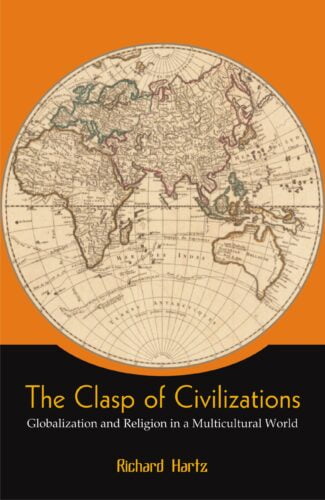
This book stresses the persistence of cultural diversity despite the homogenizing pressure of globalization, but argue that this diversity need not lead to conflict and may be our greatest resource. It contains essays on the idea of India and the American dream, as well as discussing broader questions raised by the meeting of different ways of knowing and being in an enigmatic world.
Our planet seems to be getting smaller and smaller. We now interact all the time with our once-distant neighbours around the globe. Yet our cultures remain almost as different as ever. Civilizations are the largest widely recognized units of this diversity. Over the centuries, each has evolved its own distinctive contributions to human life. But differences can be a source of conflict as well as mutual enrichment. Since the end of the Cold War, and even more in the aftermath of the events of September 11, 2001, the scenario of a clash of civilizations has struck many people as plausible.
Proposing the alternative scenario of a clasp of civilizations, these essays stress the persistence of cultural diversity despite the homogenizing pressure of globalization, but argue that this diversity need not lead to conflict and may be our greatest resource. Given the centrality of religion to many cultures, much depends on the replacement of outdated attitudes of religious exclusivism by a pluralism that embraces the other. A historical landmark in the emergence of religious pluralism was the Parliament of Religions that opened in Chicago on 11 September 1893. This book brings out its significance as a global cultural event, too far ahead of its time to be fully understood by its contemporaries.
The Parliament brought several notable exponents of Asian spirituality to America, including the charismatic Swami Vivekananda from India. Thus began the contact between these two countries which continues to deepen to this day. Written by an American living in India, the book contains essays on the idea of India and the American dream, as well as discussing broader questions raised by the meeting of different ways of knowing and being in an enigmatic world.
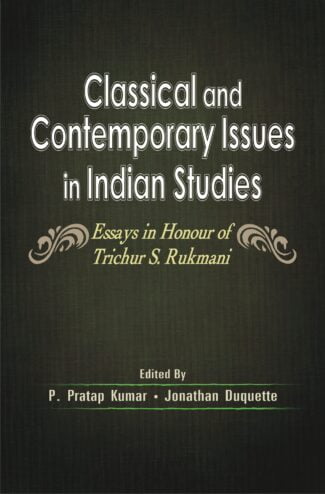
The book, a Festschrift volume in honour of Prof. Trichur S. Rukmani, focuses on diverse themes: Patanjali’s Yogasutras, Advaita Vedanta, Gaudiya Vaishnavism, Shaivism, grammar and epic literature. It also addresses issues of contemporary relevance relating broadly to non-violence, environment, gender and syncretism.
This book is a Festschrift volume in honour of Prof. Trichur S. Rukmani that reflects the plethora of issues which she studied in her scholastic life. It includes twenty-four essays by distinguished scholars on various classical and contemporary issues pertaining to Indian studies. While the volume discusses current research in the field of Yoga Prof. Rukmani’s primary research field it also invites further reflection on other areas of Indian thought which have attracted her attention in the course of her long and fruitful academic career.
The volume is divided thematically into six sections. The first two sections deal with the interpretation of the Yoga, Vedanta and Gaudiya-Vaishnava traditions, exploring issues of hermeneutics, methodology and philosophical analysis. The third section addresses issues of continuity within the Indian tradition and includes essays on tantric Shaivism, Mimamsa and the Bhagavad-Gita. The next two sections feature essays on the Sanskrit philosophical discourse, grammar, epic literature and renunciation in the Indian tradition. The last section of the volume takes up issues of contemporary relevance such as the insights from the Hindu tradition towards environmental ethics, the Svadhyaya movement and its dharmic ecology, non-violence, gender, cultural identity as well as syncretism.
The volume, including essays as diverse as Prof. Trichur S. Rukmani’s own scholarly interests, will certainly benefit all scholars and students of Indology, especially those concerned with the religious and philosophical traditions of India.
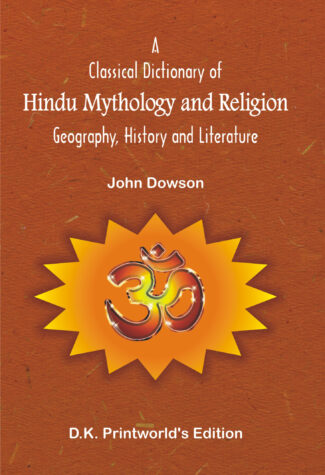
The Classical Dictionary encompassing the vast Hindu pantheon presents episodes, legends, literary works and geographical locales associated with Hindu religious beliefs. It is now offered in a fresh, state-of-the-art typeset incorporating standard diacritical marks.
Professor Dowsons Classical Dictionary of Hindu Mythology and Religion is now offered not only in a fresh format, but in a fresh, state-of-the-art typeset as well. Incorporated here, in addition, are standard, meticulously worked-out diacritical marks as rather mechanical aids in comprehending the transliteration of Indic sounds, more specially of the Sanskrit alphabet, into English. In its alphabetically arranged articles of varying lengths, the Dictionary tries to encompass the vast Hindu pantheon, in all its complexity and symbolic/metaphorical representations. Covering, thus, a whole mix of mythological characters: gods and demons, prajapatis and raksasas, it also presents explanatory accounts of important events/episodes, legends, literary works, and even geographical locales, associated with Hindu myths and religious beliefs. Acclaimed worldwide ever since its first appearance, the Dictionary sustains its essentially undiminishing appeal to the scholars and general readers seeking to discover for themselves the awesome world of Hindu mythology and the grand cosmogonic design it unveils.
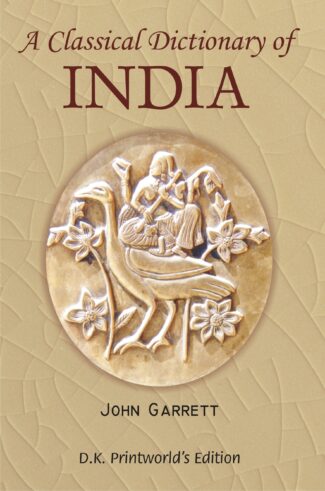
The work, now in a fresh format, is a storehouse of knowledge on Indian Mythology/antiquities Hindu deities and concepts, Buddhist theological terms, etc. It refers to authentic writings and their vast sources.
With lucidly-written accounts, of varying lengths, this Dictionary attempts to unfold all that anyone would want to know about Vedic/post-Vedic/classical India: its religions, mythology, pantheonic/legendary personages, schools of philosophy, sacred and secular texts, arts, antiquities, sciences, geography, rituals, customs, and the like; and, these besides, English equivalents/definitions of myriad Indic, largely Sanskrit, terms. For its sheer authenticity, the late John Garrett had drawn on a whole line-up of eminent Orientalists: from Max Muller to Monier Williams, form H.H. Wilson to John Muir. No wonder, the author, himself a celebrated scholar, invested over two-decade-long effort to compile this reliable, neatly exhaustive Classical Dictionary. For well over a hundred years, Garretts work has been recognized as a classic in its own right. Now reaching it out afresh to the present-day international scholarship, this edition has been recomposed in its entirely. And its lay-out as well has been improved in certain user-friendly ways. Also intoduced here, for the first time, are standard diacritical marks to help readers comprehend the transliteration of Indic sounds. As ever, it remains an unfailing companion of researchers, scholars and general readers, involved with Indological studies.
| There are no products |